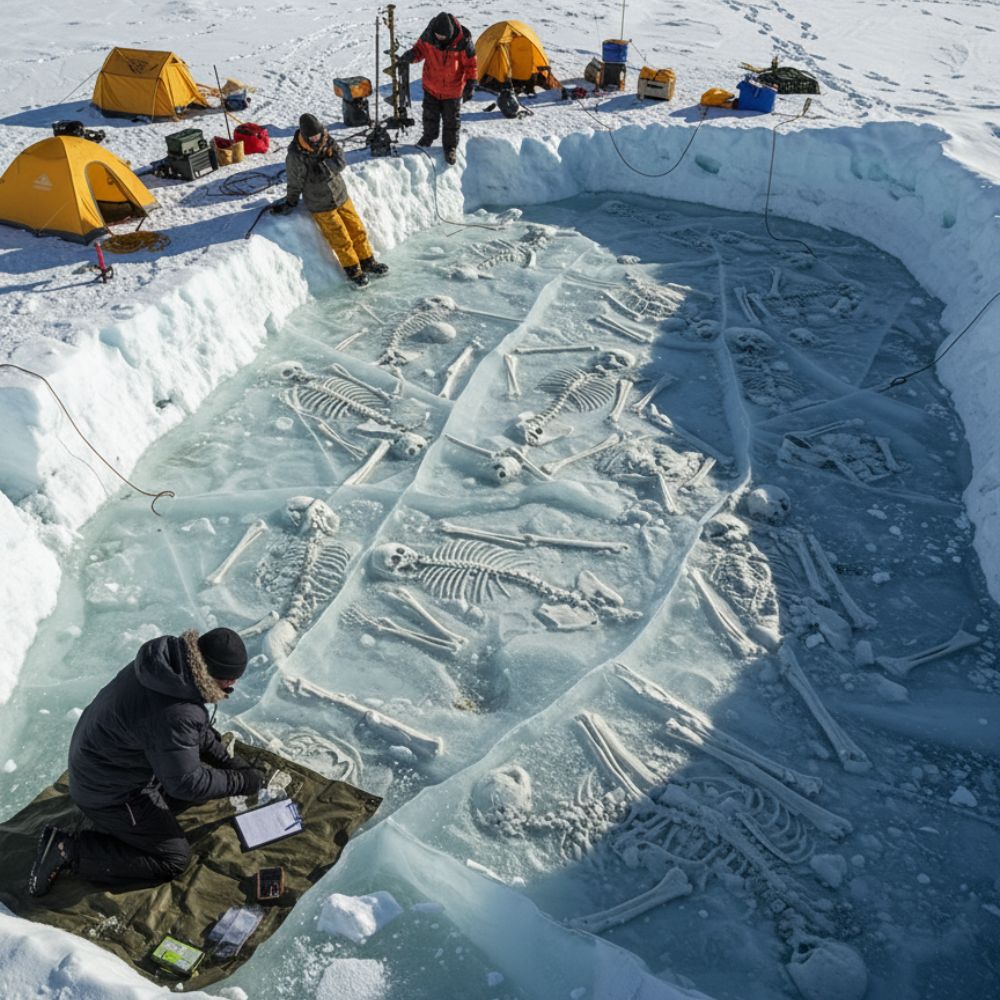Unearthing the Frozen Past: A Glimpse into the Siberian Ice Tombs

The biting Siberian winds whipped around Dr. Aris Thorne as he surveyed the excavation. Years of speculation, geological surveys, and sheer dogged determination had led him and his team to this desolate corner of the Yamal Peninsula. For centuries, whispers among the Nenets nomads spoke of “the place where the ancient ones sleep under the endless white,” tales dismissed by most as mere folklore. But Aris, a maverick paleoanthropologist from Cambridge, had found patterns in the permafrost anomalies that hinted at something far grander.
It was the summer of 2027, and the Arctic summer, though brief, offered just enough respite for the heavy machinery to carve out the initial trench. What they found beneath meters of ice and frozen earth was beyond anything Aris had dared to imagine. Not just a few isolated graves, but an entire necropolis, perfectly preserved by a sudden, catastrophic deep freeze dating back to the late Bronze Age, around 1200 BCE.
“Another one, Dr. Thorne!” Anya Petrova, the team’s lead osteologist, called out, her breath misting in the frigid air. Aris carefully picked his way along the narrow path bordering the rectangular pit. Below, the ice glowed with an eerie, cerulean light, encasing dozens of human skeletons in a macabre, yet profoundly beautiful, tableau. Each individual was frozen in situ, some curled, others seemingly sprawled, their bones remarkably intact. He knelt beside a section where a young woman lay, her delicate ribcage visible through the translucent ice, almost as if she were merely sleeping.
The implications were staggering. This wasn’t just a burial site; it was a snapshot in time. The uniform positioning of many bodies suggested a mass casualty event, perhaps a sudden, catastrophic climate shift or a brutal conflict. The tents, scientific instruments, and core drills scattered around the site were testament to the painstaking work. Every millimeter of ice was being melted, carefully analyzed, and documented, fearing that even a slight change in temperature could compromise millennia of preservation.
“We have to be careful with the artifacts, Aris,” Anya warned, gesturing towards faint impressions in the ice near one skeleton. “They’re incredibly fragile after all this time.” The team had already recovered woven textiles, fragments of leather, and surprisingly well-preserved wooden tools, all hinting at an advanced culture for their time and location. The isotopic analysis of the bones would reveal their diet, migrations, and even potential diseases.
As the sun dipped below the horizon, casting long, stark shadows across the frozen tundra, Aris looked out at the vast, silent landscape. Here, in the heart of the Yamal Peninsula, a lost civilization was slowly, meticulously being brought back to life, offering an unprecedented window into the lives, deaths, and mysteries of those who walked the earth over three millennia ago. The Siberian ice had been a cruel mistress, taking these lives, but now, it was also the ultimate preserver, a natural time capsule safeguarding stories for a future that was finally ready to listen.
